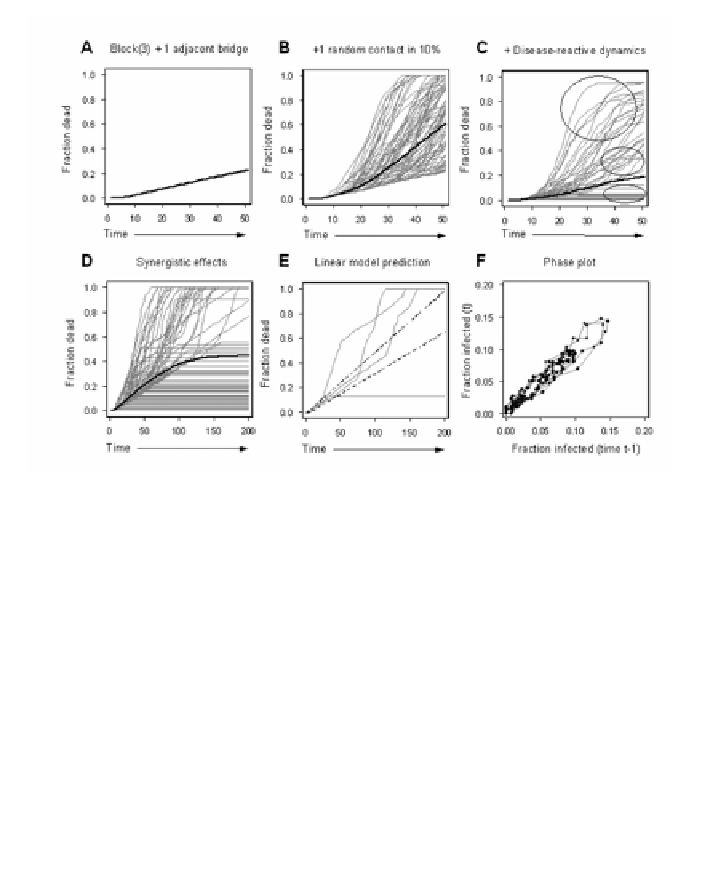Biomedical Engineering Reference
In-Depth Information
Figure 7
.
Complex epidemiologic trajectories in dynamic structured networks
. The combined effects of highly
structured populations and illness-reactive link dynamics is modeled in 100 families of 3 agents, with one mem-
ber of each family also capable to transmitting disease to an adjacent family (
A
). Family systems are highly
sensitive to the introduction of a small number of random linkages as in (
B
), where addition of a single addi-
tional random contact for every 30th individual results in substantial acceleration in mean disease penetrance
(heavy line) and the collapse of predictability. When distance-dependent disease-reactive network dynamics are
superimposed (
C
), mean penetrance rates return to basal levels but the dynamic regime remains highly unstable
and produces 3 attractor trajectories including explosive growth, a slow steady population burn, and rapid patho-
gen extinction. Note that the mean trajectory does not coincide with any of the regimes actually observed. (
D
)
"Knife-edge" dynamics emerge in the same system when sick individuals withdraw at random from 50% of their
potential contacts (instead of selectively avoiding those most distant as in
C
). Host/pathogen equilibrium is
virtually impossible to attain under these circumstances and one population or the other rapidly becomes extinct.
Which one occurs is difficult to predict on the basis of the epidemic's early behavior (
E
). Linear statistical analy-
ses fail to accurately forecast epidemic trajectories due to highly unsmooth derivatives (dashed lines represent a
95% prediction interval based on ARIMA 1,1,0 time-series analysis of the first 30 observations). However, these
"catastrophic" dynamics are neither chaotic nor random, as shown by a strong autoregressive component in the
phase plot of the number of infected hosts at time
t
vs.
t
- 1 (
F
). Note the absence of classically chaotic (smooth-
curved) or random stochastic (scattered) dynamics.
agent in each block maintaining a potential connection to one member of an
adjacent block. Figure 7B shows the effects of adding a single additional ran-
dom contact possibility for every 30th individual (10% of the population), which
substantially accelerates disease penetrance and causes a profound collapse in
predictability (Figure 7B). When distance-dependent disease-reactive link dy-
namics are superimposed in Figure 7C, mean penetrance returns to basal levels
but the dynamic regime remains highly unstable. Three attractors emerge includ-
ing (a) explosive depletion of the majority of hosts, (b) a slow steady burn
through the population, and (c) rapid extinction of the pathogen with predomi-

